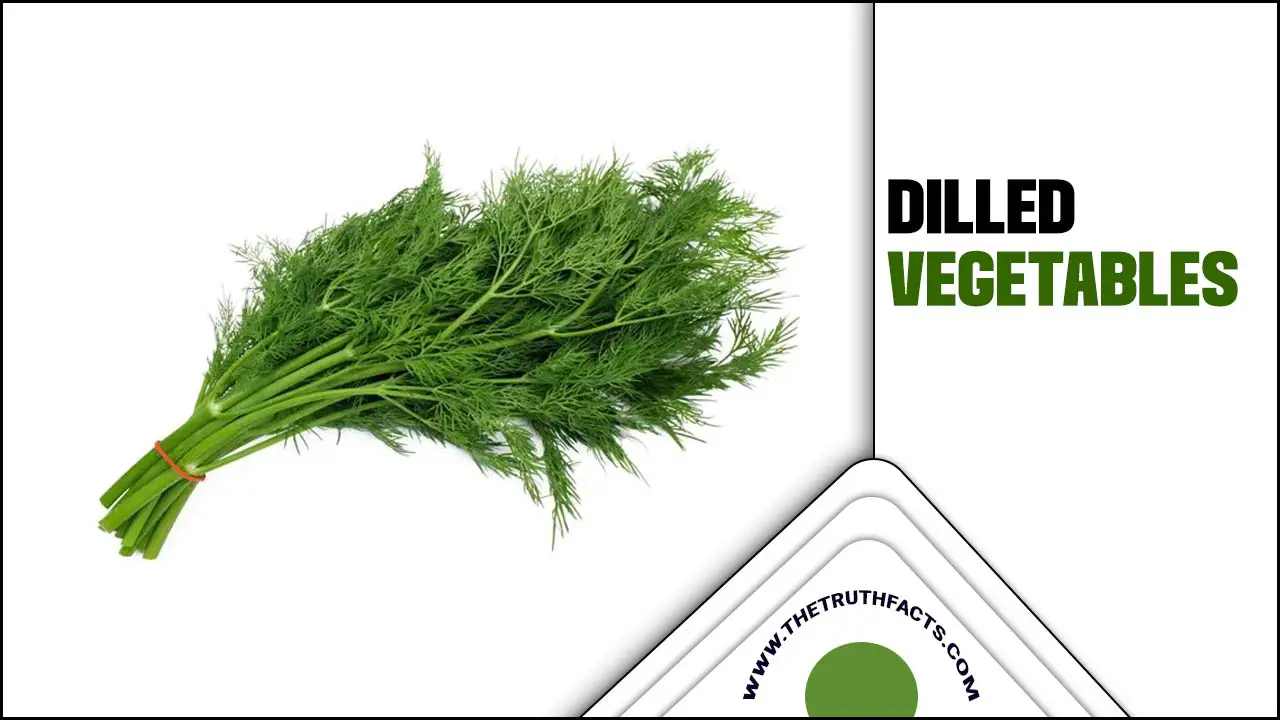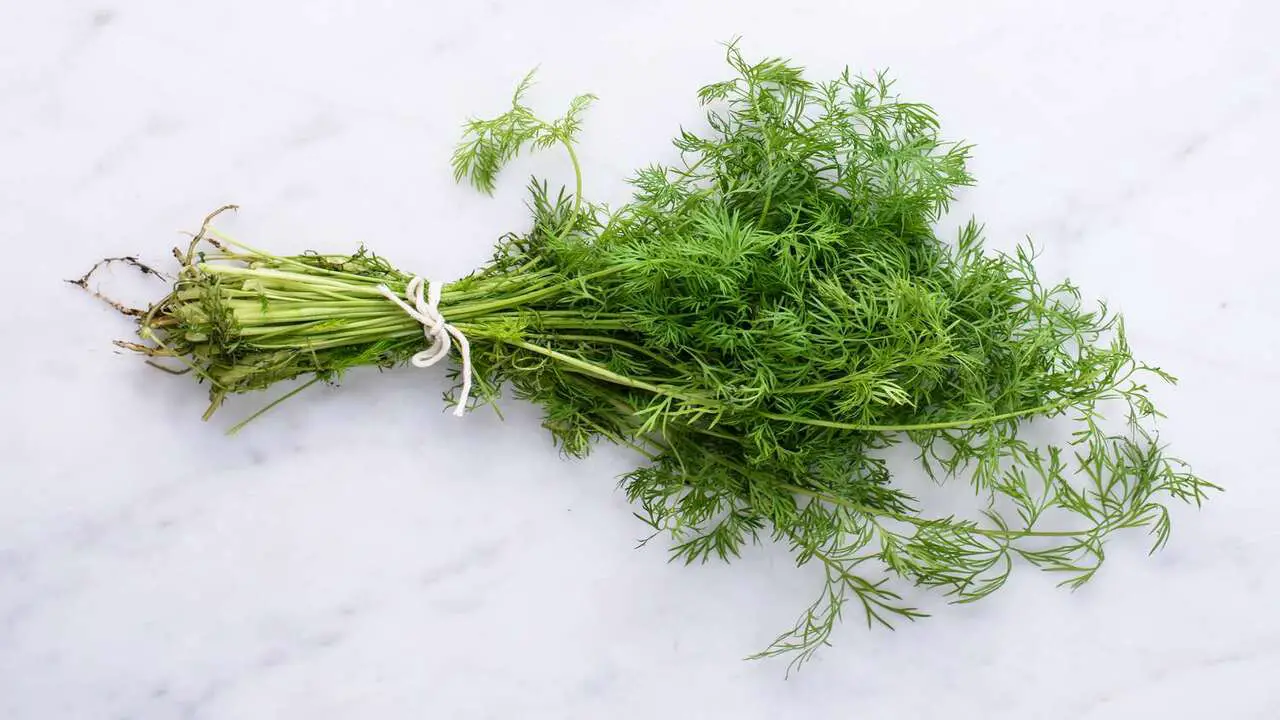Summer is a season of sunshine, warmth, and fresh eats. While grilling burgers and hot dogs may be a staple for many summer gatherings, there are plenty of other refreshing and flavorful dishes to enjoy.
One such dish is dilled vegetables. This simple yet delicious recipe is perfect for hot summer days when you want something light and refreshing. Combining crisp, fresh vegetables, tangy vinegar, and fragrant dill creates a flavor explosion that will leave your taste buds joyful.
Not only are dilled vegetables delicious, but they are also incredibly healthy. Packed with vitamins, minerals, and fiber, these veggies are a great way to get your daily dose of nutrients. They are also low in calories, making them the perfect snack or side dish for those watching their waistline. Plus, you can customize the recipe with so many different vegetables to suit your tastes and preferences.

Ingredients
- 1 large zucchini, sliced into rounds
- 1 red bell pepper, cut into chunks
- 1 yellow bell pepper, cut into chunks
- 1 red onion, cut into wedges
- 1 cup cherry tomatoes
- 2 tablespoons olive oil
- 2 tablespoons fresh dill, chopped
- Salt and pepper to taste
- 1/4 cup olive oil
- 3 tablespoons lemon juice
- 2 garlic cloves, minced
- 1 teaspoon Dijon mustard
- 1 teaspoon honey
- Salt and pepper to taste
Make Delicious Recipes With Dilled Vegetables

Dilled vegetables refer to various vegetables that are preserved in a brine solution infused with dill weed. This traditional preservation method enhances the flavor and extends the shelf life of the vegetables. Commonly used vegetables include cucumbers (pickles), carrots, green beans, and cauliflower.
Dill’s distinct herbal taste adds a refreshing and tangy note to the vegetables, creating a delightful snack or side dish. The process involves sterilizing the vegetables, packing them in jars with dill and spices, and pouring hot brine. Once cooled, the dilled vegetables are ready to enjoy as a tasty and healthy meal addition.
Prepare The Vegetables

To prepare dilled vegetables, start by selecting a variety of fresh vegetables such as cucumbers, carrots, and cauliflower. Wash them thoroughly and cut them into desired shapes, like slices or florets. Combine water, vinegar, sugar, salt, and a generous fresh dill in a large pot. Bring this brine to a boil, ensuring the sugar and salt dissolve completely.
Next, add the prepared vegetables to the boiling brine and cook for a few minutes until they become slightly tender. Be careful not to overcook them, as you want to retain their crispness. Remove the pot from heat and let it cool to room temperature.
Transfer the cooled dilled vegetables to clean, sterilized jars, making sure to pack them tightly. Pour the brine over the vegetables, leaving some headspace. Seal the jars tightly and refrigerate them for at least 24 hours to allow the flavors to meld together.
Blanch The Vegetables

Blanching is a culinary technique used to partially cook vegetables by immersing them briefly in boiling water, followed by immediately plunging them into ice water to stop the cooking process. Dilled vegetables are a delightful variation of this method, where the vegetables, such as cucumbers, carrots, and cauliflower, are flavored with dill before blanching.
First, wash and cut the vegetables into desired shapes to prepare dilled vegetables. Next, bring a pot of water to a rolling boil and add a pinch of salt and fresh dill. Carefully add the vegetables and blanch them briefly, usually around 2-3 minutes, until they become vibrant and slightly tender.
Immediately transfer the blanched vegetables to a bowl of ice water to preserve their color and texture. Dilled vegetables are visually appealing and maintain a crisp and refreshing taste, making them a delightful addition to salads, appetizers, or healthy snacks.
Prepare The Brine:
Select fresh vegetables like cucumbers, carrots, cauliflower, and bell peppers to prepare brine-dilled vegetables. Wash and cut them into desired shapes, ensuring they fit well in sterilized jars. Combine water, vinegar, salt, sugar, and desired herbs like dill, garlic, and peppercorns in a saucepan. Bring the mixture to a boil, stirring until the salt and sugar dissolve completely.
Next, pack the vegetables tightly into the jars, leaving enough headspace at the top. Pour the hot brine over the vegetables, covering them entirely. Seal the jars tightly and let them cool to room temperature. Then, refrigerate the jars for at least 24 hours to allow the flavors to develop and the vegetables to pickle.
Once pickled, the brine-dilled vegetables can store in the refrigerator for several weeks. They make a delicious and tangy addition to salads and sandwiches or enjoy as a healthy snack on their own.
Combine Vegetables And Brine

Combining vegetables with brine is a popular method of preserving and flavoring vegetables. Brine, typically made of water, salt, and sometimes vinegar acts as a natural preservative and enhances the taste of the vegetables. To create brine-dilled vegetables, such as pickles, cucumbers, carrots, and green beans, are commonly handy.
The process involves submerging the vegetables in the brine and allowing them to ferment or pickle over time. During fermentation, beneficial bacteria break down sugars, producing lactic acid that gives the vegetables a tangy flavor. This extends their shelf life and boosts their nutritional value by increasing probiotics.
Brine-dilled vegetables are a versatile addition to many dishes. They can enjoy as a crunchy and flavorful snack or used to add zest to salads, sandwiches, and various recipes. This traditional preservation method allows us to savor the fresh, crisp goodness of vegetables long after their harvest season has passed.
Add The Brine:
Adding brine to vegetables is a popular method of pickling, preserving, and enhancing their flavor. To do this, thoroughly clean and cut the vegetables you choose, such as cucumbers, carrots, or cauliflower, into bite-sized pieces or slices. In a saucepan, combine water, vinegar, salt, sugar, and various aromatic spices like garlic, dill, peppercorns, and mustard seeds to create the brine solution.
Bring the mixture to a boil, then let it cool to room temperature. Next, pack the vegetables tightly into sterilized jars and pour the cooled brine over them, ensuring the vegetables are fully submerged. Seal the jars and refrigerate for a few days to allow the flavors to meld. The result is tangy, crunchy, and delectable brine-dilled vegetables, perfect as a delightful snack or a zesty addition to salads and sandwiches.
Marinate:
Marinated dilled vegetables are a delightful culinary creation that infuses fresh vegetables with a burst of tangy and herbaceous flavors. To prepare this appetizing dish, assorted vegetables like cucumbers, carrots, bell peppers, and onions are sliced or diced and then submerged in a mixture of vinegar, water, sugar, salt, and freshly chopped dill.
The marinating process allows the vegetables to soak up the zesty and aromatic marinade, creating a perfect blend of sweet, sour, and savory tastes. The vegetables soften slightly as they sit, enhancing their texture and making them more palatable.
This delectable side dish not only tantalizes taste buds but also offers several health benefits. Packed with essential vitamins, minerals, and fiber, marinated, dilled vegetables make for a nutritious addition to any meal.
Whether served as a refreshing appetizer, a zesty accompaniment to grilled meats, or a crunchy topping for salads, marinated dilled vegetables are a versatile and delightful treat that appeals to various tastes and preferences.
Serve:
Served dilled vegetables are a delightful culinary delight, offering a refreshing and flavorful twist to traditional vegetable dishes. Dill, a fragrant herb with a distinct tangy flavor, infuses the vegetables with its aromatic essence, elevating their taste to new heights. This preparation often includes a medley of fresh vegetables like cucumbers, carrots, cauliflower, and green beans, adding vibrant colors and textures to the plate.
To create these delicious treats, people usually blanch the vegetables to retain their crispness before immersing them in a brine infused with dill, vinegar, garlic, and various spices The pickling process infuses the vegetables with the savory, herbaceous notes of dill, resulting in a delightful balance of tanginess and herbal goodness.
Served dilled vegetables are a versatile addition to any meal. They make for a delectable side dish, a zesty topping for sandwiches and salads, or a wholesome snack. With their enticing aroma and burst of flavors, dilled vegetables will surely please the palate of both vegetable enthusiasts and food connoisseurs alike.
Conclusion
Now that you know how easy it is to make dilled vegetables, it’s time to get creative. Add your own twist by using different types of vegetables or herbs. Don’t be afraid to experiment! This refreshing summer delight is perfect for picnics, BBQs, or simply as a snack.
And let’s be real, who doesn’t want to impress their guests with a homemade dish that’s both healthy and delicious? So go ahead, try it, and get ready to be the talk of the party with your amazing dilled vegetables.
FAQs
1.What Are Dilled Vegetables?
Ans: Dilled vegetables are a type of pickled vegetables that infuse with dill weed and other spices. They are commonly served as a refreshing, tangy summer snack or side dish.
2.What Vegetables Are Typically Used In Dilled Vegetables?
Ans: Cucumbers are the most common vegetable handy in dilled vegetables. However, other vegetables, such as carrots, green beans, cauliflower, and radishes, can use to create various dilled vegetable mixes.
3.How Are Dilled Vegetables Made?
Ans: The vegetables are first cleaned and sliced or chopped to make dilled vegetables. They are then placed in a jar with a brine solution of water, vinegar, salt, and sugar. Dill weed, garlic, and other spices are added for flavor. The jar is sealed and left to pickle for a few days to allow the flavors to develop.
4.Can I Reuse The Pickling Brine For Multiple Batches Of Dilled Vegetables?
Ans: Reusing the pickling brine for multiple batches of dilled vegetables is generally not recommended. The brine’s flavor and acidity diminish with each use, which can affect the quality of the pickling process.
5.Can I Add Hot Peppers To Dilled Vegetables For Some Heat?
Ans: Adding hot peppers like jalapenos or red pepper flakes can spice up your dilled vegetables if you enjoy spicy foods. However, be cautious with the amount you add, as it can significantly increase the heat level.